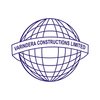Filter interviews by
Varindera Constructions Site Engineer Interview Questions and Answers
Varindera Constructions Site Engineer Interview Experiences
1 interview found
(3 Questions)
- Q1. What is retrofitting? ??
- Ans.
Retrofitting is the process of adding new technology or features to older systems or structures to improve performance or functionality.
Retrofitting is commonly done to improve energy efficiency in buildings by adding insulation or upgrading HVAC systems.
It can also involve strengthening structures to meet current safety standards, such as earthquake retrofitting for older buildings.
Retrofitting may include adding new ...
- Q2. What is bitumen ??
- Ans.
Bitumen is a sticky, black, highly viscous liquid or semi-solid form of petroleum. It is used in road construction and waterproofing.
Bitumen is a byproduct of crude oil refining.
It is commonly used in road construction for asphalt pavements.
Bitumen is also used in waterproofing products such as roofing felt and sealing compounds.
- Q3. What is cantilever beam??
- Ans.
A cantilever beam is a beam that is supported at only one end, with the other end projecting freely into space.
Supported at one end, projecting freely into space
Commonly used in construction for balconies, bridges, and diving boards
Experiences bending and shear forces
Interview Preparation Tips
Top trending discussions






Interview questions from similar companies

I applied via Naukri.com and was interviewed in Jan 2021. There were 3 interview rounds.
Interview Questionnaire
2 Questions
- Q1. Precommissioning test of transformers
- Ans.
Precommissioning tests of transformers ensure proper functioning and safety before energizing.
Visual inspection of transformer and its components
Measurement of insulation resistance
Measurement of winding resistance
Verification of transformer ratio and polarity
Verification of oil level and quality
Testing of protective devices
Verification of grounding
Functional testing of cooling system
Verification of nameplate data
- Q2. 11kv & 33kv overhead power line distribution
- Ans.
11kv & 33kv overhead power line distribution
11kv and 33kv are common voltage levels for overhead power lines
Overhead power lines are used to distribute electricity from power stations to consumers
The voltage level determines the distance the power can be transmitted and the size of the conductors needed
Proper insulation and grounding is important for safety
Maintenance and inspection of the lines is necessary to ensure
Interview Preparation Tips

Site Engineer Interview Questions & Answers
Hindustan Construction Companyposted on 20 Dec 2020
Interview Questionnaire
1 Question
- Q1. Floor Tile thickness, types of tile, company of tile,

Site Engineer Interview Questions & Answers
Hindustan Construction Companyposted on 29 Jan 2021
Interview Questionnaire
1 Question
- Q1. Site related

Site Engineer Interview Questions & Answers
Hindustan Construction Companyposted on 28 Dec 2021
I applied via Company Website and was interviewed before Dec 2020. There were 3 interview rounds.
Interview Questionnaire
5 Questions
- Q1. What a term of Rolling margin on a steel?
- Ans. Rolling margin is a difference weight of steel actual weight and theoretical weight.
- Q2. Initial setting time of cement
- Ans.
Initial setting time of cement is the time taken by cement to harden and attain a particular strength.
Initial setting time is determined by Vicat apparatus
It is the time taken for the cement to lose its plasticity and become hard
The standard initial setting time for ordinary Portland cement is 30 minutes
Factors affecting initial setting time include temperature, water-cement ratio, and type of cement
- Q3. Elongation % of steel fy 500
- Ans.
The elongation % of steel fy 500 is approximately 12%.
Elongation % is the measure of ductility of a material.
It is the percentage increase in length of a material before it fractures under tension.
For steel fy 500, the elongation % is approximately 12%.
This means that the steel can stretch up to 12% of its original length before it breaks.
- Q4. How much bag of cement in 1 cubic meter
- Ans.
The amount of cement required for 1 cubic meter varies depending on the concrete mix design.
The amount of cement needed for 1 cubic meter of concrete varies from 250kg to 600kg depending on the mix design.
The mix design specifies the ratio of cement to other materials like sand and aggregates.
For example, a mix design of 1:2:4 requires 400kg of cement per cubic meter of concrete.
It is important to accurately calculate ...
- Q5. How much density of material Steel Concrete Sand
- Ans.
Density of materials: Steel - 7850 kg/m3, Concrete - 2400 kg/m3, Sand - 1600 kg/m3
Density of steel is higher than that of concrete and sand
Density of concrete varies depending on the mix design
Density of sand can vary depending on the source and moisture content
Interview Preparation Tips

Site Engineer Interview Questions & Answers
Hindustan Construction Companyposted on 12 Sep 2021
Interview Questionnaire
1 Question
- Q1. How many techniques you often use to do your work?
Interview Preparation Tips

Site Engineer Interview Questions & Answers
Hindustan Construction Companyposted on 20 Dec 2023
(1 Question)
- Q1. What is the density of RCC structure
- Ans.
The density of RCC structure typically ranges from 2200 to 2500 kg/m^3.
Density of RCC is influenced by the type and proportion of materials used.
Common density range for RCC is 2200 to 2500 kg/m^3.
Higher density indicates stronger and more durable RCC structure.

Site Engineer Interview Questions & Answers
Hindustan Construction Companyposted on 21 May 2023
I applied via Approached by Company and was interviewed before May 2022. There were 2 interview rounds.

(5 Questions)
- Q1. Tell me about ur self in brief
- Q2. Qualifications and working experience related questions
- Q3. Problem solving questions
- Q4. Conditional questions
- Q5. About concrete grade
Interview Preparation Tips
- Works relate
- Execution
- Concrete
- Bbs
- Billing

I applied via Naukri.com and was interviewed in Feb 2023. There were 3 interview rounds.

(1 Question)
- Q1. Abouts my qualifications Why are you interested
(1 Question)
- Q1. My work related about water supply project
Interview Preparation Tips

(2 Questions)
- Q1. Size of concrete cube
- Ans.
The size of a concrete cube is typically 150mm x 150mm x 150mm for standard testing purposes.
Standard size for concrete cube is 150mm x 150mm x 150mm
Used for testing the compressive strength of concrete
Other sizes may be used for specific projects or requirements
- Q2. 150mm*150mm*150mm
Varindera Constructions Interview FAQs
Tell us how to improve this page.
Varindera Constructions Interviews By Designations
- Varindera Constructions Safety Officer Interview Questions
- Varindera Constructions Deputy Project Manager Interview Questions
- Varindera Constructions Senior Engineer Interview Questions
- Varindera Constructions Assistant General Manager Interview Questions
- Varindera Constructions Senior Safety Officer Interview Questions
- Varindera Constructions Assistant Manager - QA & QC Interview Questions
- Varindera Constructions Site Engineer Interview Questions
- Varindera Constructions Deputy Manager Procurement Interview Questions
- Show more
Interview Questions for Popular Designations
- Civil Site Engineer Interview Questions
- Electrical Site Engineer Interview Questions
- Senior Site Engineer Interview Questions
- Site Supervisor Interview Questions
- Site Engineer Mechanical Interview Questions
- Senior Civil Site Engineer Interview Questions
- Site Incharge Interview Questions
- Site Execution Engineer Interview Questions
- Show more
Varindera Constructions Site Engineer Interview Process
based on 1 interview
Interview experience
Site Engineer Interview Questions from Similar Companies
Varindera Constructions Site Engineer Reviews and Ratings
based on 3 reviews
Rating in categories
|
Civil Foreman
26
salaries
| ₹3.3 L/yr - ₹6 L/yr |
|
Store Incharge
24
salaries
| ₹3 L/yr - ₹9.6 L/yr |
|
Senior Engineer
22
salaries
| ₹4.9 L/yr - ₹8.5 L/yr |
|
Civil Site Engineer
20
salaries
| ₹1.9 L/yr - ₹5.4 L/yr |
|
Safety Officer
16
salaries
| ₹3.6 L/yr - ₹5.3 L/yr |

L&T Construction

Simplex Infrastructures

ITD Cementation India

Ashoka Buildcon
- Home >
- Interviews >
- Varindera Constructions Interview Questions >
- Varindera Constructions Site Engineer Interview Questions












